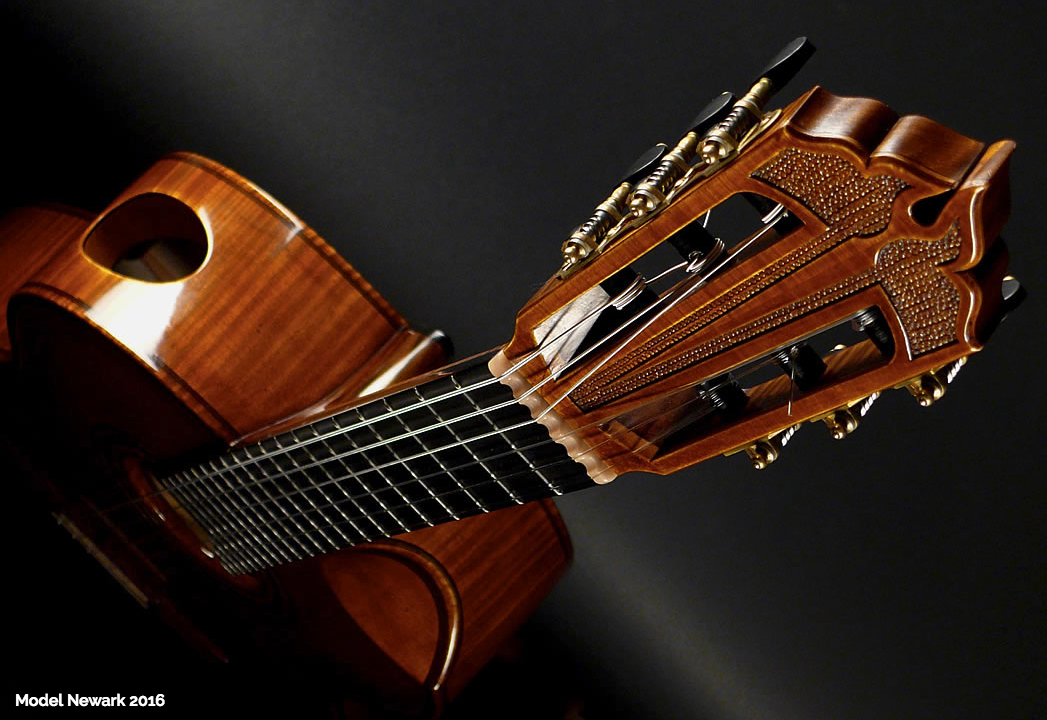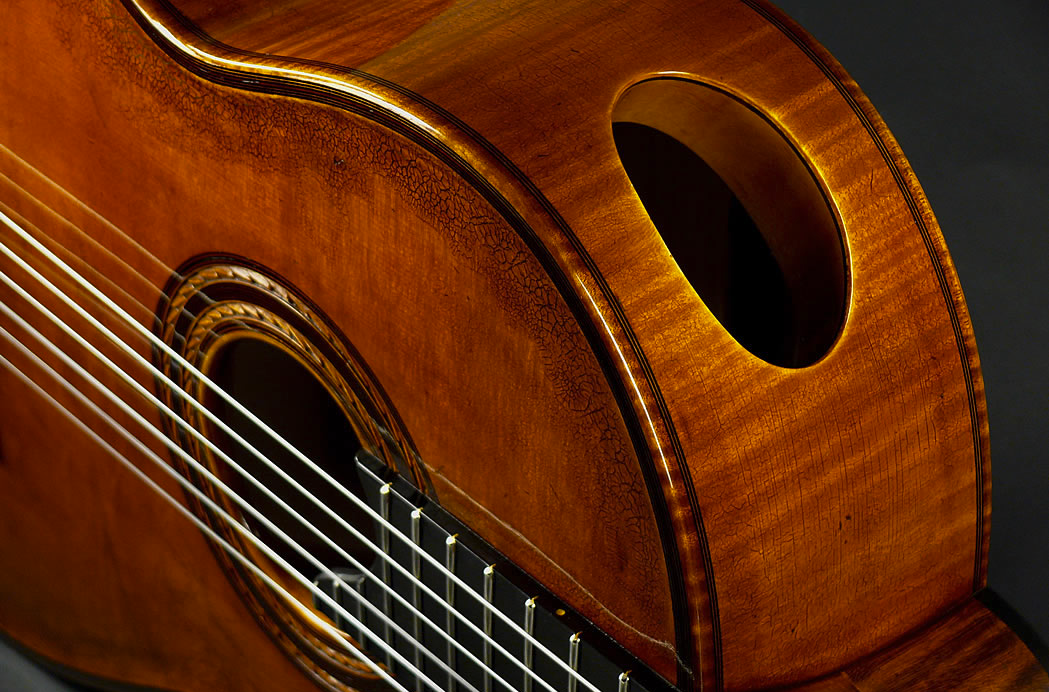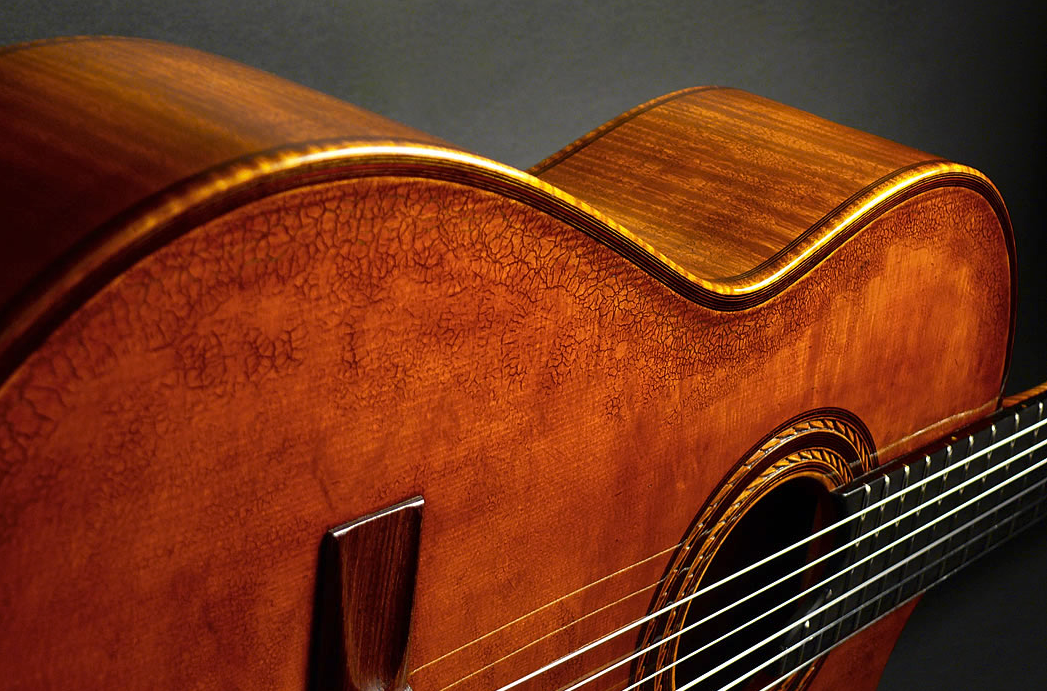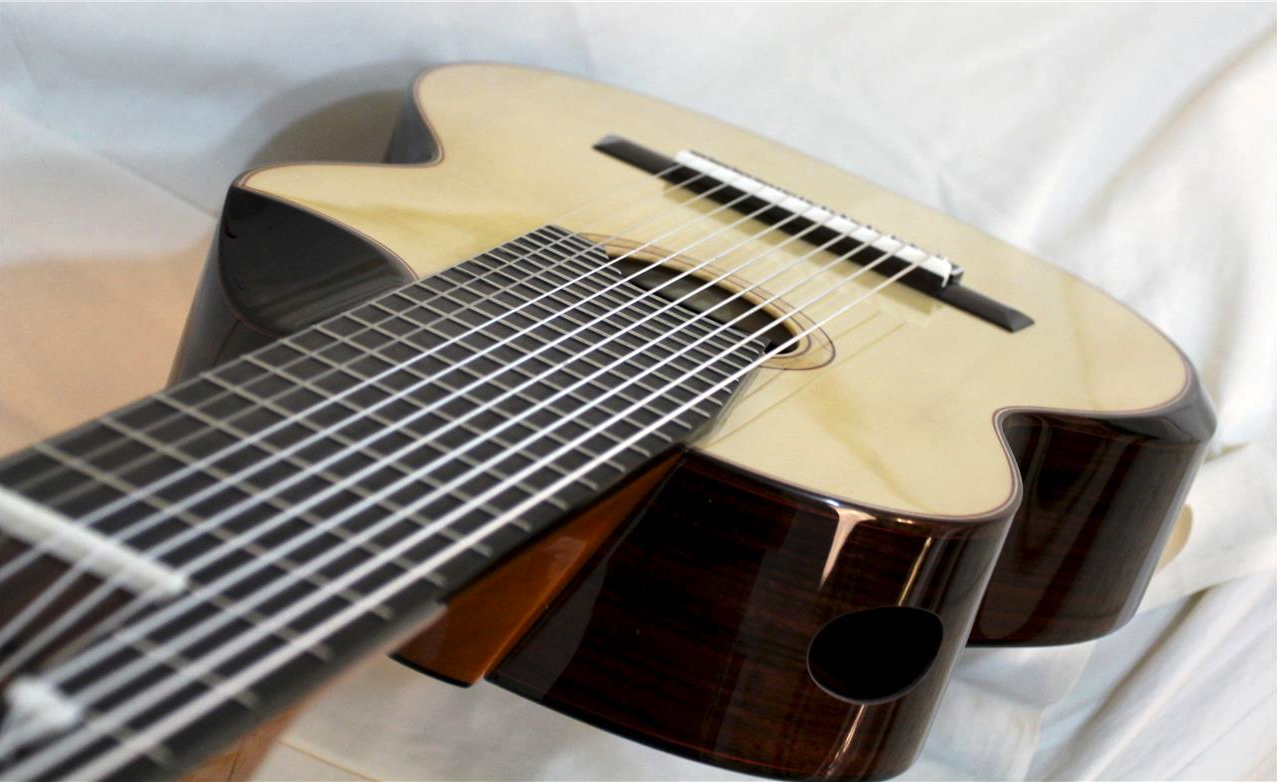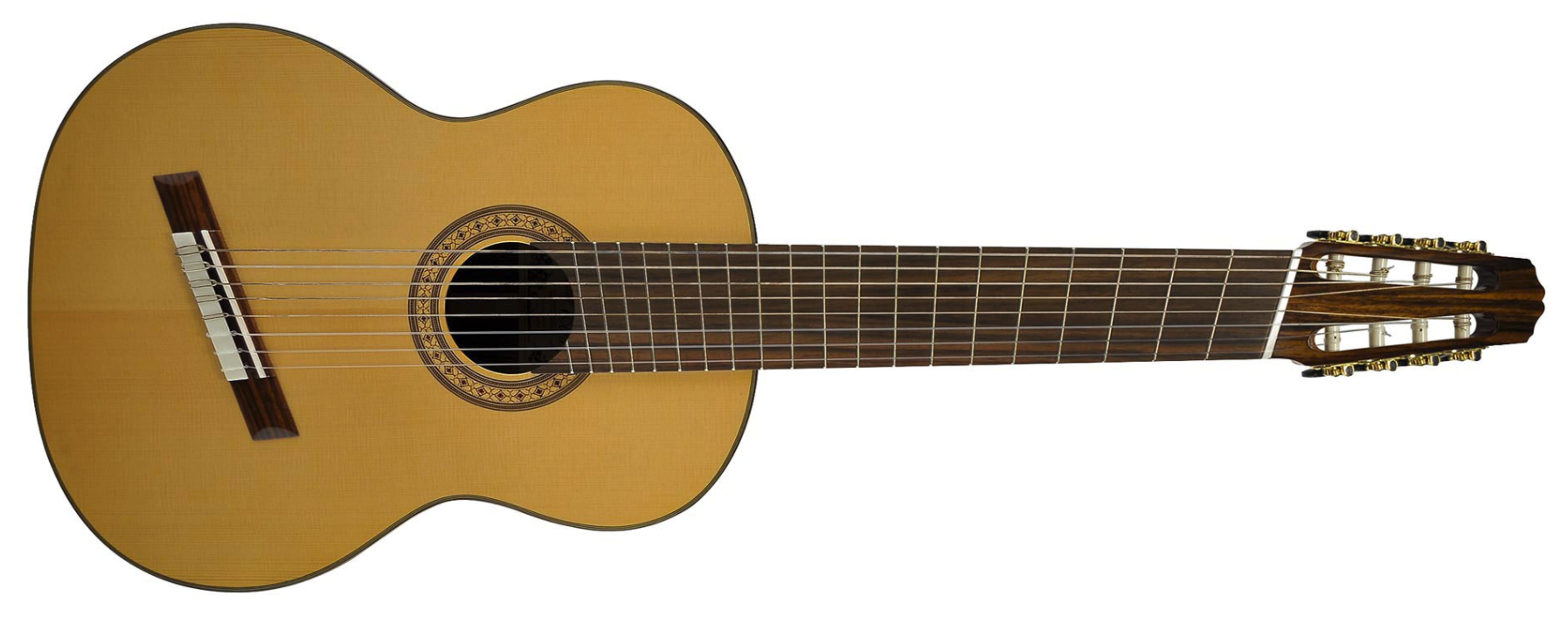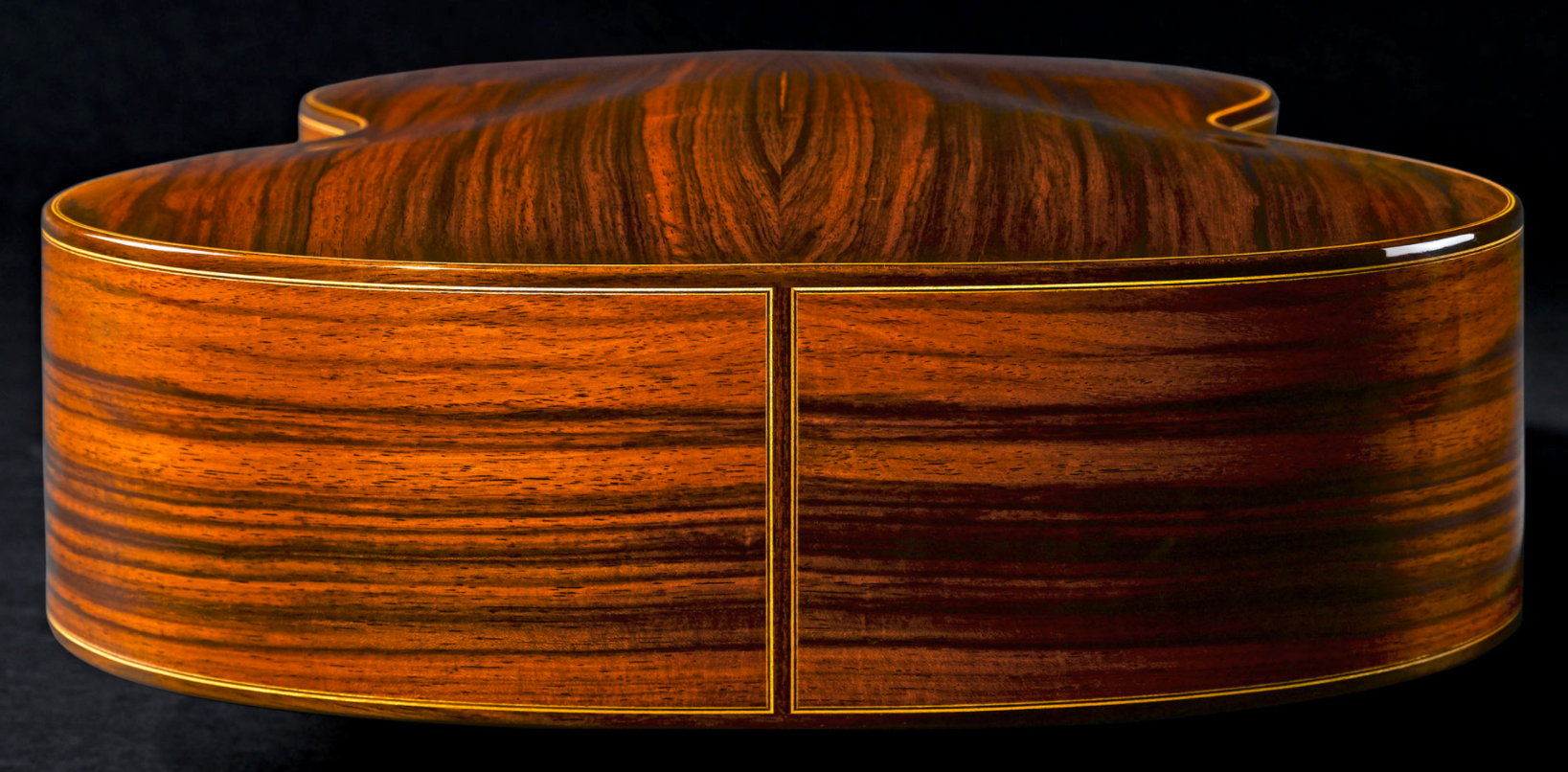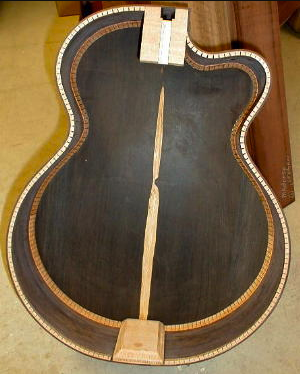Beautiful & Unusual Classical Guitars - Episode 4: 'Newark' Christian Koehn
Welcome the 2016 'Newark' classical guitar by German luthier Christian Koehn. A fabulous beauty. Read on to learn more about this fabulous guitar and its maker.
Introduction
Christian Koehn - a luthier from Germany has been making guitars professionally since he graduated at the top of the International Guitar Making School course in 2006 in Newark at the Newark College. Interestingly, the guitar featured in this article is named after the college and area that offers the guitar making course. Koehn was the recipient of the prestigious Ashley Mark Publishing Prize for being the best of the best in his graduation class.
Since that time Christian has gone on to setup his own workshop back in his birthplace - Berlin.
The guitar featured in this article is a custom order. Not too much is revealed about the woods used in its construction but all I can say is that the result is breathtaking to say the least.
Striking Features:
- Stunning aged tonewoods
- Hand-carved rosettes and headstocks
- Soundport
- Beveled cutaway
- French polish with shellac
- Traditional tooling used in construction
- Traditional Antonio Torres design
How to get one for yourself?!?!
Christian has a 12 to 18 month waiting time which isn't too bad considering some luthiers have waiting lists of almost a decade! I reckon get in quick before Christian's guitar list fills up! Here's how:
Christian has easy payment terms of just 10% to secure a guitar with a further 10% payable when he starts the build (30% for custom builds).
Here's where Christian studied guitar-making if you're keen to have a go for yourself:
Check out my other articles of beautiful & unusual classical guitars here.
As always,
Let your fingers fly!
Modern Classical Guitar Design Part 8: Fanned Frets
With the increasing popularity of extended range guitars (guitars with more than 6 strings) luthiers have had to devise a way to retain intonation and playability - enter the 'fanned fret' or 'multi-scale' fretboard. Is it the answer or should we just continue to play guitars with normal frets? Read on to discover more....
Introduction
Guitars with additional strings are nothing new. From the earliest days of the lute instruments that resembled guitars have always been around. However, recently guitars with more than 6 strings in the classical guitar realm have started to gain in popularity. In electric guitar circles Steve Vai is probably heralded as leading the renaissance in multi-stringed or extended range guitars even though they existed well before he burst onto the scene in the early 80s.
It was Ibanez that took up the challenge of designing a 7-string guitar that could meet Mr. Vai's demands. It would seem that the desire to have an extended range on guitar crossed over into the classical scene too. You may be thinking to yourself that Narcisco Yepes had already been playing an 11 string for many years and that is true however his instrument was extremely rare and those guitars weren't truly adopted into mainstream classical guitar.
What does this have to do with Multi-scale/Fanned fret classical guitars?
However, I digress. What does all of this have to do with fanned frets? Well, the thing is this - the more strings you add onto a guitar the greater the chances are that the intonation will become worse and worse. Bass strings need extra tension or they become 'floppy' and almost unplayable. The way to circumvent this is to make the length of the string longer i.e. the distance from the bridge nut to the neck nut should be increased the problem is you can't really do that to the treble strings otherwise they'll break or the tension will be so tight that you won't be able to play them.
Solution!
Enter the 'fanned fret' or 'multi-scale' system. Smart luthiers out there realised that if they could angle the frets, bridge, & neck nuts outwards from the treble strings they could increase the length of the bass strings whilst retaining the same or very similar scale length on the treble strings. Here's an example from Salvador Cortez guitars:
Wouldn't this be hard to play?
The simple answer is no! Think about the natural 'angles' that your fingers take when you place them on guitar...our fingers naturally splay outwards and upwards and this perfectly mirrors what is taking place on a fanned fret guitar. The result is a guitar that actually feels perfectly natural to play.
Looking for a classical guitar with Fanned Frets?
Here is a list of luthiers that are making multi-scale classical guitars:
- Stoll guitars
- Tom Bills
- Michael Greenfield (think Andy McKee)
Should you have one?
If you are planning on moving into extended range classical guitar playing then it should definitely be a consideration although strictly speaking it isn't a necessity. The most important thing is that it works well with you - not for you. The guitar as much as possible should be a natural extension of you. It should feel comfortable sitting in your lap and comfortable for your hands and fingers.
Check out my other Modern Classical Guitar Design articles
Part 9: Reinforced Carbon Fiber Neck
Part 7: Arched back
Part 6: Double Tops
Part 5: Lattice Bracing
Part 4: Armrest
Part 3: Soundport
Part 2: Indented Cutaway
Part 1: Elevated Fingerboard
Modern Classical Guitar Design Part 7: Arched Back
The Arched back (braceless) design feature has been around for a while on acoustic guitars but luthiers in the classical guitar realm have only recently started incorporating the design into classical guitars. Find out a little more about the arched back innovation by reading my article.
Introduction
Classical guitars have been around in their present form for circa 200 years. Since that time their design has been an ongoing, constant, breathing topic. Unlike many other instruments from that time the design of classical guitars and guitars in general hasn't stopped evolving. Many luthiers are constantly striving to improve the design by making guitars easier to play, lighter & stronger with beautiful tones and aesthetics to match.
One such design that has been gaining more ground over the past few decades is the 'arched back classical guitar'.
Traditional Vs Arched
One of the best ways to describe the arched back of a classical guitar is to compare it to the traditional back which was for all intents and purposes - flat. The picture below shows a traditional classical guitar design with a flat back.
Pictured below is a wonderful picture clearly showing the arched back and its radically different style.
From the two pictures above it is very easy to see the aesthetic differences between the two designs. Yet perhaps the most important point to consider is the impact upon volume, comfort, and tonal difference that an arched-back designed guitar has compared to it's flat-backed predecessors.
A little bit of history
Arched back guitars have been around for at least 4 decades and have been used quite regularly in acoustic guitar design by famous makers such as Taylor and Guild. Their use and integration into production-model guitars by such well-known and respected guitar makers is a definitive sign that the design works and has been accepted by the guitar community at large. Classical guitar makers have been a bit slower to adopt the arched back design but it is definitely gaining momentum and acceptance by luthiers around the globe.
Pros & Cons
At the heart of the matter is sound and more so the quality of sound. Many guitar makers in recent years have been striving to make classical guitars that have more projection and are louder than the guitars of yesteryear. There is a school of thought out there that believe the beautiful lively tones of Ramirez & Hauser has been superseded & replaced by guitars that have volume but lack the beautiful and somewhat earthy and wild sound of older instruments. This of course if purely subjective and there are posits for both camps.
Let's look at the Pros
- Increased rigidity - similar to the strength of an arch in a building or bridge
- Focused - the parabolic shape is said to 'focus' the projection of the sound
- Raises the resonant frequency
- Increased sustain
A rare glimpse at an arched back with 'braceless construction'.
Let's look at the Cons
- Heavier than a comparable flat back
- Tend to sound 'darker'
- Excess sustain can 'muddy' up the sound
Where can I buy one?
Here's a nice list of luthiers that are making braceless arched back classical guitars with great results:
I have to be honest and say that the only arch back guitars I've played have all been Ovation guitars (which is about as arched as it gets!) so I'm writing this article based upon testimonies of luthiers and players. Please leave a comment below and also check out my other articles on modern classical guitar design innovations.
Check out my other Modern Classical Guitar Design articles
Part 8: Fanned Frets
Part 6: Double Tops
Part 5: Lattice Bracing
Part 4: Armrest
Part 3: Soundport
Part 2: Indented Cutaway
Part 1: Elevated Fingerboard
Let your fingers fly!



